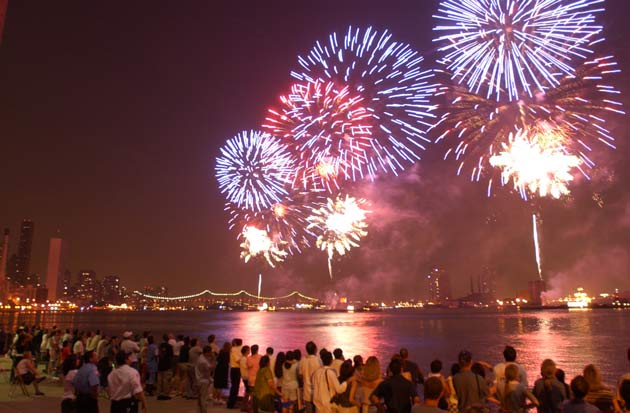The Strange Stuff Inside Fireworks

When ooohing and ahhhing at the brilliant colors and surprising patterns of a fireworks display, you might take a moment to admire the awesome display of chemistry and physics too.
Despite the fantastic aerial display of Dragon's Lairs and Sky Monkeys, the inside of an unlit fireworks device doesn't look like much. But there is some strange stuff in there.
The handmade shell contains a powdery concoction of chemicals that produce the bangs and the whistles, as well as the pretty effects. Tubes, hollow spheres, and paper wrappings work as barriers in the device. More complicated shells are divided into even more sections, which controls the timing of secondary explosions once the rocket is airborne.
Big booms and whistles come from flash powder. Once used for flashes in photography, flash powder is a combination of fuel-like metal and a chemical that feeds oxygen to fire up the fuel.
Different combinations of metals and oxides produce a whole array of sounds.
While ancient Greeks and Romans used bismuth in their beauty care products and coins, chemists add bismuth trioxide to the flash powder to get that crackling sound, oddly named "dragon eggs." Ear-splitting whistles take four ingredients, including a food preservative and Vaseline.
The variety of color in a fireworks show depends on the mix of metals.
Sign up for the Live Science daily newsletter now
Get the world’s most fascinating discoveries delivered straight to your inbox.
Copper produces blue sparks. Barium, also used in rat poison and glassmaking, makes green. Calcium burns orange and sodium, yellow. Aluminum and titanium put the white stars in an aerial flag.
To light up a red, white, and blue flag, chemists lay out the emblem's design on wax paper. The pattern you see up in the air, whether it’s a smiley face or a bow tie, mirrors the arrangement of the metals in the shell.
Because the flag, or any other pattern, shoots out from the shell as a two-dimensional image, people watching the show from different angles can't always tell what they're looking at. To make sure everyone has a good view, pyrotechnists tend to send duplicates into the sky at the same time.
Related News
More Mysteries Solved









